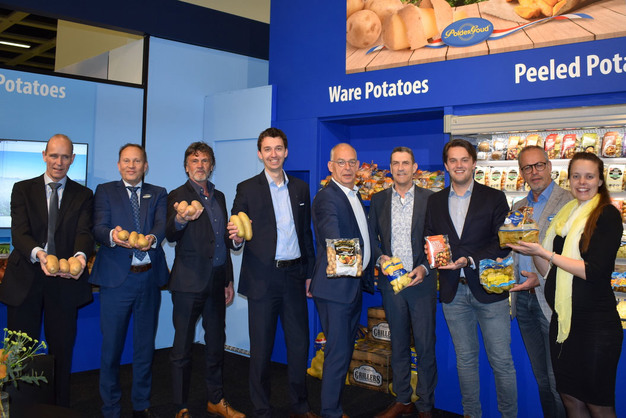The Dutch Seed Potato and Seeds General Inspection Service (NAK) recently announced that in 2023, 38,776 hectares of seed potato acreage were registered for inspection. That is six percent less than the previous year. Acreage in Germany and France is shrinking, too. That brings about an imbalance in the seed potato market that translates into higher prices, says Hans Geling, director of ware and seed potatoes at Schaap Holland.
 Team Schaap Holland
Team Schaap Holland
Less basic material is available to growers. For Schaap Holland, that means, among other things, more emphasis on overseas seed potato production. "Unfortunately, we don't use 100% Dutch seed potatoes; more than half our acreage is under contract to French growers. There's such demand for seed potatoes from the French fry industry. I can imagine if, as now, the seed potato crop has a disappointing year regarding drought and diseases, more will consider other areas," Hans begins.
The declining acreage is not solely to blame for the current market imbalance. Last season was marred by drought, resulting in poor tuber setting in the seed potato areas and generally coarser tubers, leading to higher losses. Hans acknowledges that those factors caused significant disruptions in the seed potato market, hence the higher prices. "Seed potato prices have corrected considerably this year, and pool payments will be much higher than in previous years.”
That's desperately needed to value seed potato cultivation's risks, which must be virus and disease-free. And, to realize enough difference between ware and seed potatoes' fiscal per hectare yields," Hans explains. The lower seed potato prices are what used to prompt many growers to switch to better-paid, less risky ware potatoes.
Decreased acreage
Geling, however, does not expect those higher prices to immediately lead to a larger seed potato acreage next season. "Although it's not yet known, we're reckoning on the Dutch seed potato acreage being somewhat lower rather than higher in the next growing season. Growers probably won't switch their cultivation plans between seed and ware potatoes from year to year."
He adds that not all regions in the Netherlands are suitable for seed potato cultivation and that things like the declining approval of crop protection substances play a role, too. "That applies, for example, to agents needed to keep in check aphids and nematodes (M. Chitwood), both of which transmit viruses. That discourages seed potato growers from giving it their all," Hans concludes.
Schaap Holland
Hans Geling
Mob: 06-51585282
[email protected]
www.schaapholland.com










